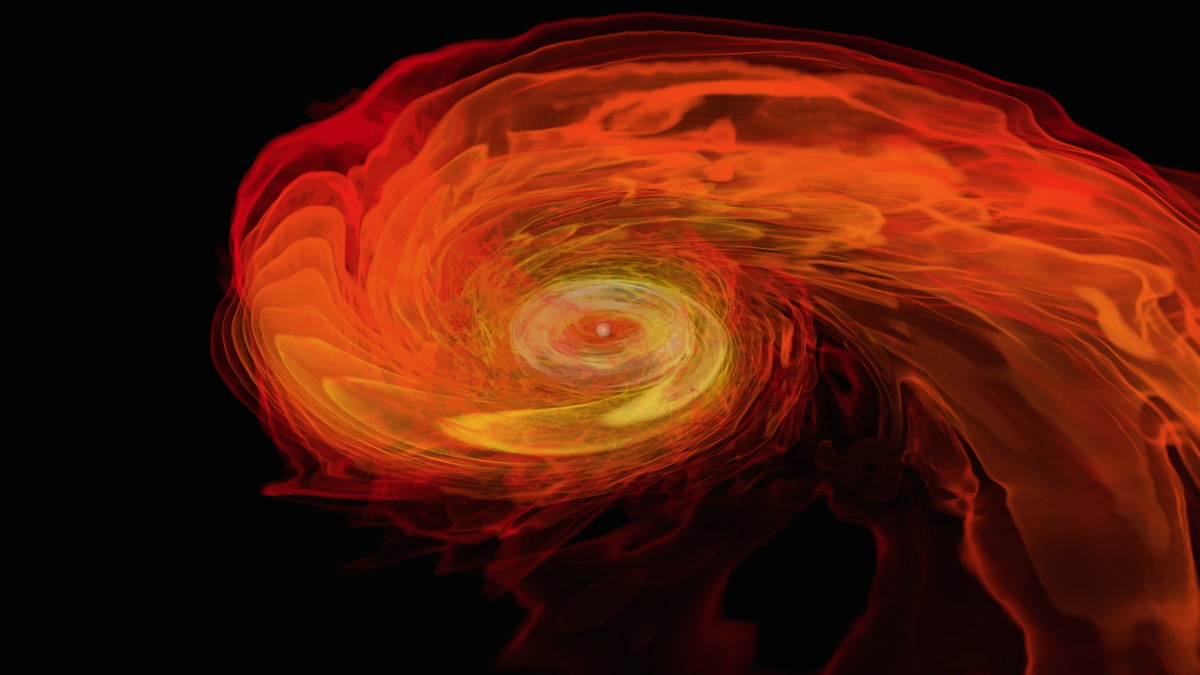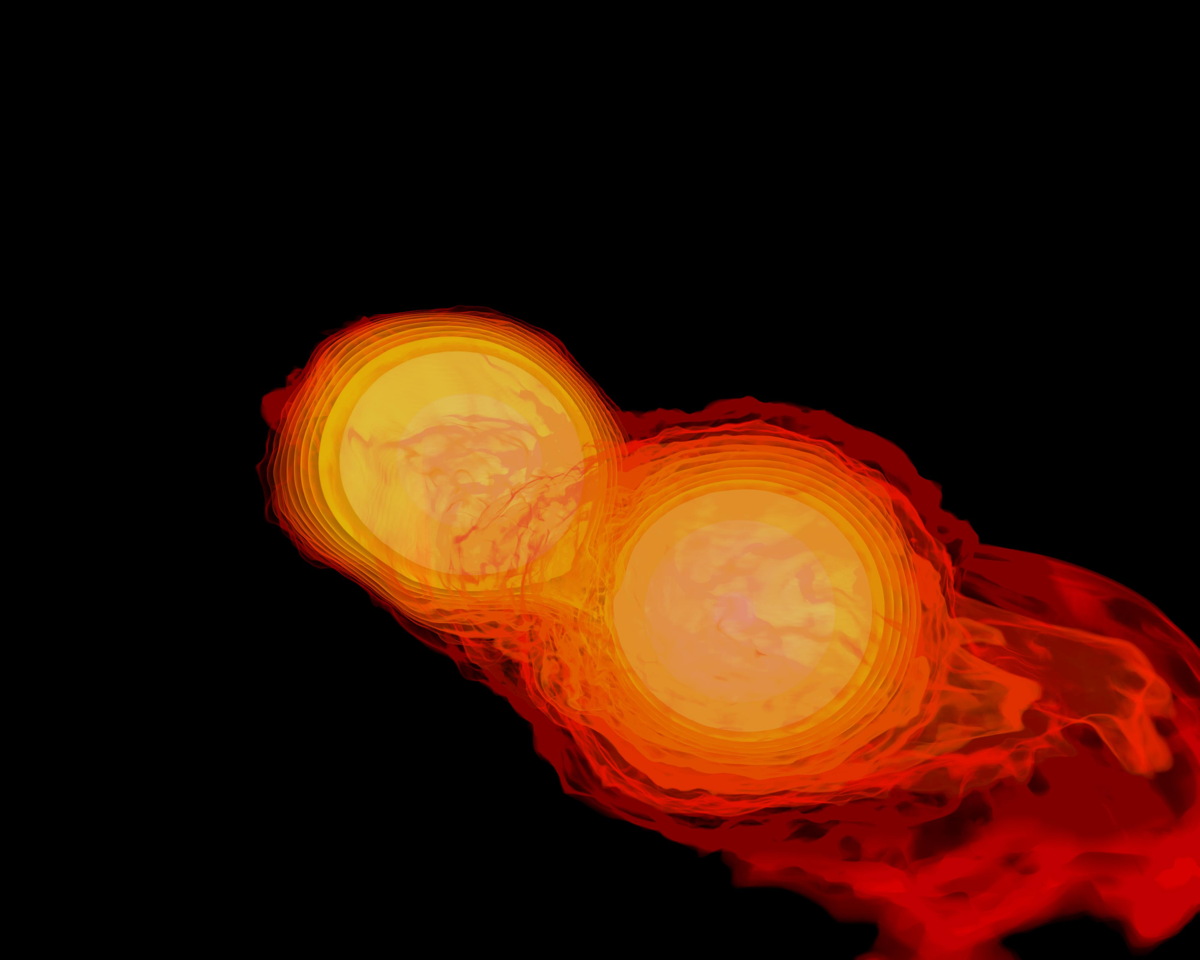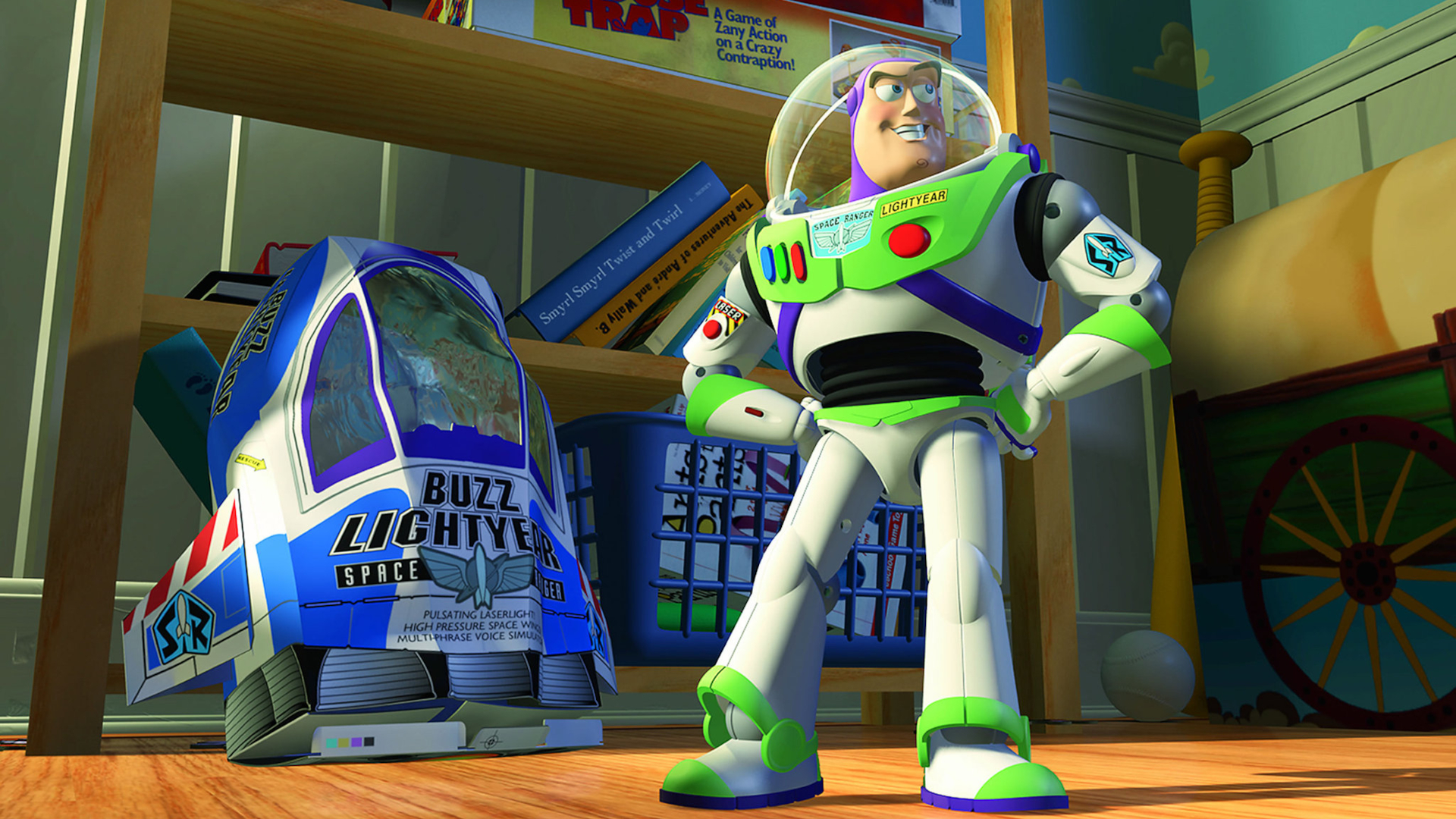Watch 2 Neutron Stars Merge and Form Black Hole (Video)

An amazing new NASA video shows two super-dense neutron stars tearing each other apart in a cataclysmic cosmic merger that ultimately forms a black hole.
The neutron star collision video, which was produced by scientists at NASA's Goddard Space Flight Center, is a supercomputer simulation. It starts off with two neutron stars — the city-size, dense remnants of a violent supernova explosion — separated by about 11 miles (18 kilometers), NASA officials said. One object contains about 1.7 times the mass of our sun, while the other weighs in at 1.4 solar masses.
The two neutron stars spiral toward each other, deforming. As they get closer and closer to each other, the bigger stellar remnant crushes the smaller one, causing it to erupt and form a spiral arm around the larger neutron star, according to NASA. [The Top 10 Star Mysteries]
"At 13 milliseconds, the more massive star has accumulated too much mass to support it against gravity and collapses, and a new black hole is born," NASA officials said in a statement. "The black hole's event horizon — its point of no return — is shown by the gray sphere. While most of the matter from both neutron stars will fall into the black hole, some of the less-dense, faster-moving matter manages to orbit around it, quickly forming a large and rapidly rotating torus."
Neutron stars form when a star that is eight to 30 times the mass of the sun explodes as a supernova, leaving behind the compressed, dense core. One cubic centimeter (0.06 cubic inches) of neutron star matter outweighs Mount Everest, NASA officials said.
In 2013, scientists found that mergers of neutron stars could create the gold in the universe. A group of astronomers, led by Edo Berger of the Harvard-Smithsonian Center for Astrophysics, discovered that the collisions of neutron stars could eject as much as 10 moon masses' worth of gold.
Scientists think that the violent cosmic mergers of neutron stars can also produce short gamma-ray bursts, which last about two seconds and unleash as much energy as all the stars in the Milky Way produce in more than a year, according to NASA.
Breaking space news, the latest updates on rocket launches, skywatching events and more!
The afterglow from these extremely bright explosions fades quickly, making them difficult to study. Astronomers want to be able to understand gamma-ray bursts by using large instruments on the ground to see the afterglow as soon as possible after the burst. Scientists also use the accurate positions and quick notification from NASA's Swift satellite, which can spot bursts from space.
Follow Miriam Kramer @mirikramer and Google+. Follow us @Spacedotcom, Facebook and Google+. Original article on Space.com.

Miriam Kramer joined Space.com as a Staff Writer in December 2012. Since then, she has floated in weightlessness on a zero-gravity flight, felt the pull of 4-Gs in a trainer aircraft and watched rockets soar into space from Florida and Virginia. She also served as Space.com's lead space entertainment reporter, and enjoys all aspects of space news, astronomy and commercial spaceflight. Miriam has also presented space stories during live interviews with Fox News and other TV and radio outlets. She originally hails from Knoxville, Tennessee where she and her family would take trips to dark spots on the outskirts of town to watch meteor showers every year. She loves to travel and one day hopes to see the northern lights in person. Miriam is currently a space reporter with Axios, writing the Axios Space newsletter. You can follow Miriam on Twitter.

